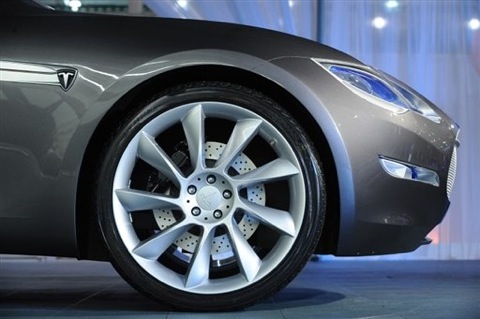Key words :
future energies,
future energies
,lithium-air
,lithium-ion
,transportation
,battery
,electricity
Battery 500
6 Oct, 2009 01:19 pm
Do you want universe-reshaping disruptive technology? Do you want to experience a classic "knee in the curve" transition? Do you want to see something Really Big happen to accelerate the transition of transportation from fossil fuels to electrons? I have got a project for you: The Battery 500 Project.
 |
As part of IBM's 2-year-old Big Green Innovations program, the Battery 500 Project aims to boost the range of rechargeable batteries for all-electric cars from less than 100 miles today to as far as 500 miles. The consortium's efforts are being led by the Almaden Lab in collaboration with several U.S. universities and the Department of Energy's national labs.
"Batteries technology has improved, but is still far inferior to gasoline in terms of how much energy they hold," said Spike Narayan, a key IBM researcher. "The energy density - which is the amount of energy a lithium-ion battery stores per unit weight - is really not enough to produce a family-sized sedan with a 300- to 500-mile range."
The remedy, according to IBM, is to harness its nanoscale semiconductor manufacturing techniques to boost the capacity of batteries by increasing their storage density by 10 times over the lithium-ion batteries used today. The Battery 500 Project aims to achieve that goal with a lithium-air battery technology, whose feasibility was demonstrated earlier this year at the University of St. Andrews in Scotland.
IBM also plans to harness its supercomputers to create a simulation so accurate that it will be able to optimize the battery's design parameters, as well as experiment with different catalysts materials, without having to build expensive prototypes. IBM estimates that it will take two years to determine if the goals of The Battery 500 Project can be met with lithium-air battery technology.
A few caveats, observations, and comments, in no particular order:
My wife and I each worked for IBM for a bunch of years in various programming, software design, and project management positions. You can decide for yourself if that means I'm biased for or against IBM's projects, or if I'm wholly objective.
Saying battery capacity today is under 100 miles is an economic, not a technological, judgment. You can easily build an EV today with a 500 mile battery, assuming you can pay (mind blowing) bill for the batteries. So, this is really a project to make such batteries cheap enough to gain significant market acceptance.
Since the very earliest days of this blog, I've been saying that the two general fields that would have an enormous impact on our energy and environmental future were genetic engineering and nanotech.
Gengineering will potentially let us create better biofuel stocks, turn cellulosic and algae sources into fuel, make the air capture and sequestration of CO2 possible, and who knows what else. Among other things, nanotech could let us build stronger, lighter vehicles, and make vastly better batteries. These are by far the two biggest technology wild cards.
Imagine for a moment what would happen if this project succeeded.[1] It's autumn of 2011, the signs of climate chaos are even more apparent than they are now (meaning an even greater percentage of mainstream voters and consumers are aware of and concerned about the issue), and the price of oil is starting to rise once again as we head into the supply crunch caused by some combination of today's lack of oil field investment and that other monster under our beds, peak oil. Suddenly, for a moderate premium, say 20% over an equivalent non-hybrid gasoline engine model, you can buy a Honda Civic EV or Ford Fusion EV. Do you think there's any chance whatsoever that they would not instantly sell out? How quickly do you think people would consider anything with an engine, including the Prius and the not-yet-one-year-old Volt, a dinosaur? How quickly would many assumptions many people make about needed changes to our transportation system be turned inside out? (Example: Cheaper solar PV + dirt cheap per-mile fuel costs + affordable EV + lots of roof area per household = a renewed surge in moving into the suburbs and exurbs again.)
[1] By succeeded; I mean it delivers kind of range/dollar needed to make a 500 mile EV affordable, and there are no immediate limits in terms of supply concerns, scalability, reliability, etc.
Originally published on The Cost of Energy
Key words :
future energies,
future energies
,lithium-air
,lithium-ion
,transportation
,battery
,electricity
-
12/12/12
Peak Oil is Nonsense Because Theres Enough Gas to Last 250 Years.
-
05/09/12
Threat of Population Surge to "10 Billion" Espoused in London Theatre.
-
05/09/12
Current Commentary: Energy from Nuclear Fusion Realities, Prospects and Fantasies?
-
04/05/12
The Oil Industry's Deceitful Promise of American Energy Independence
-
14/02/12
Shaky Foundations for Offshore Wind Farms
1 comment(s)
[1]
Comment by philippines outsourcing
21 Nov, 2009 07:15 am
instead of working on a one time charge that will deliver a 300 mile or longer range. work on a way to recharge while driving like a series of fans...
 Alert Moderator
Alert Moderator






